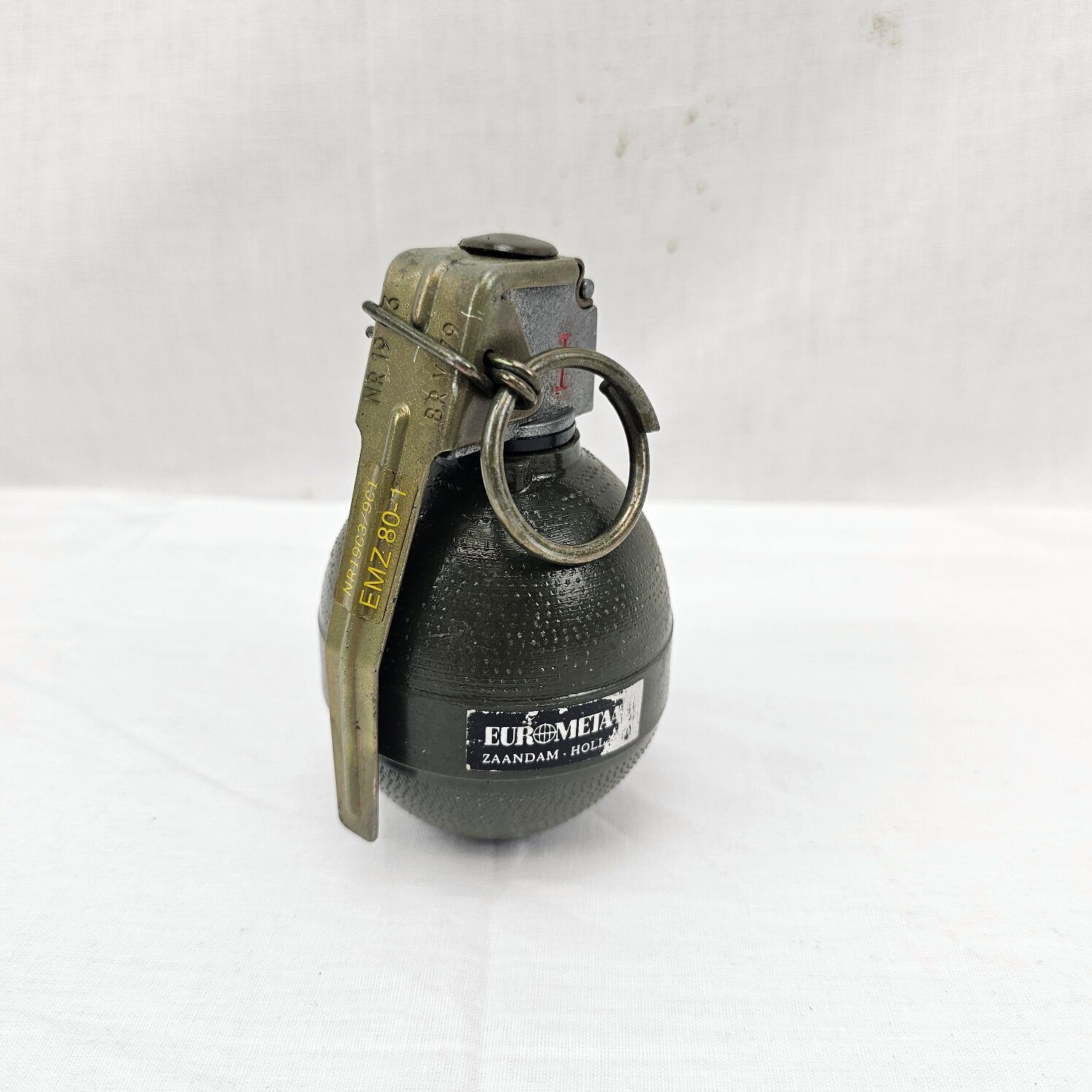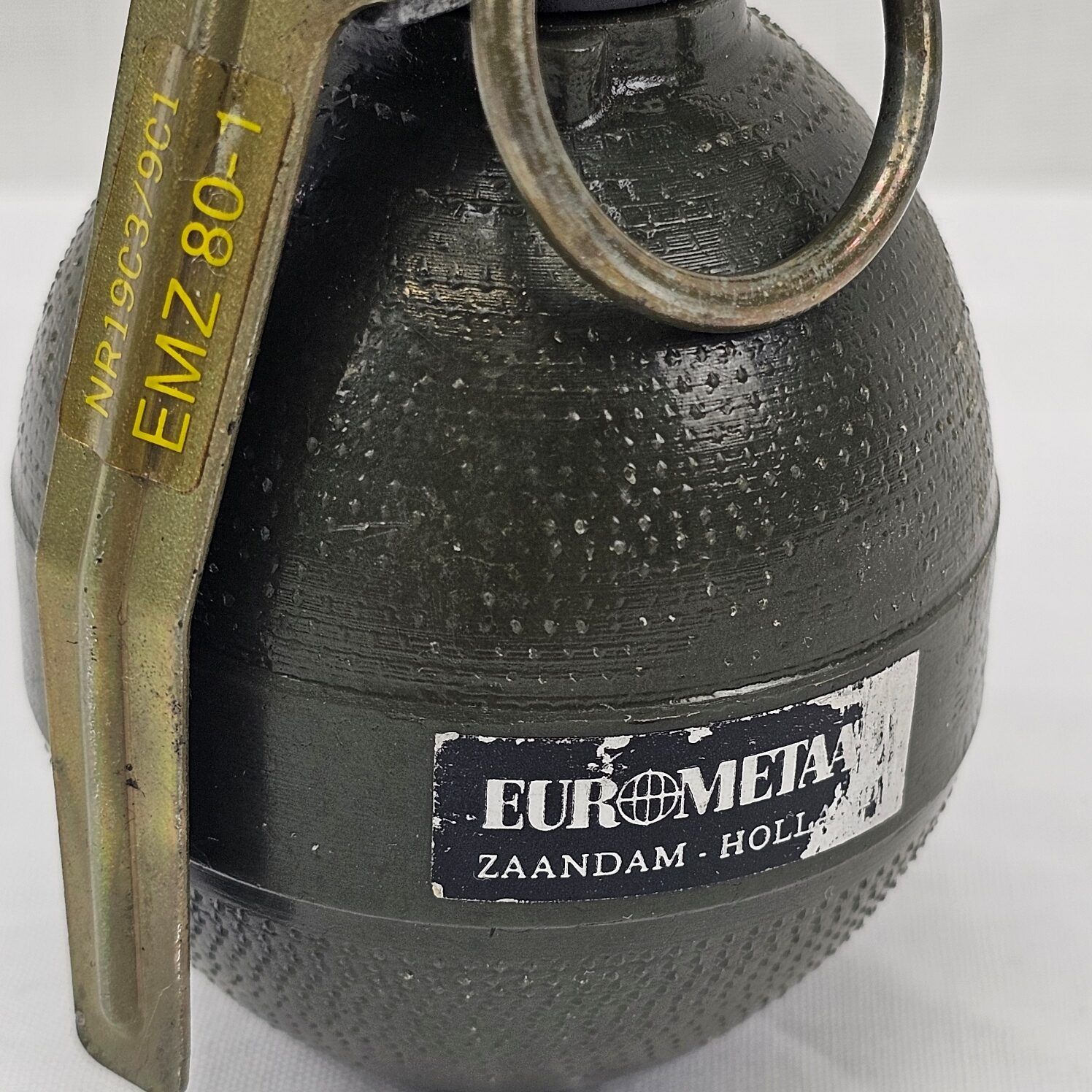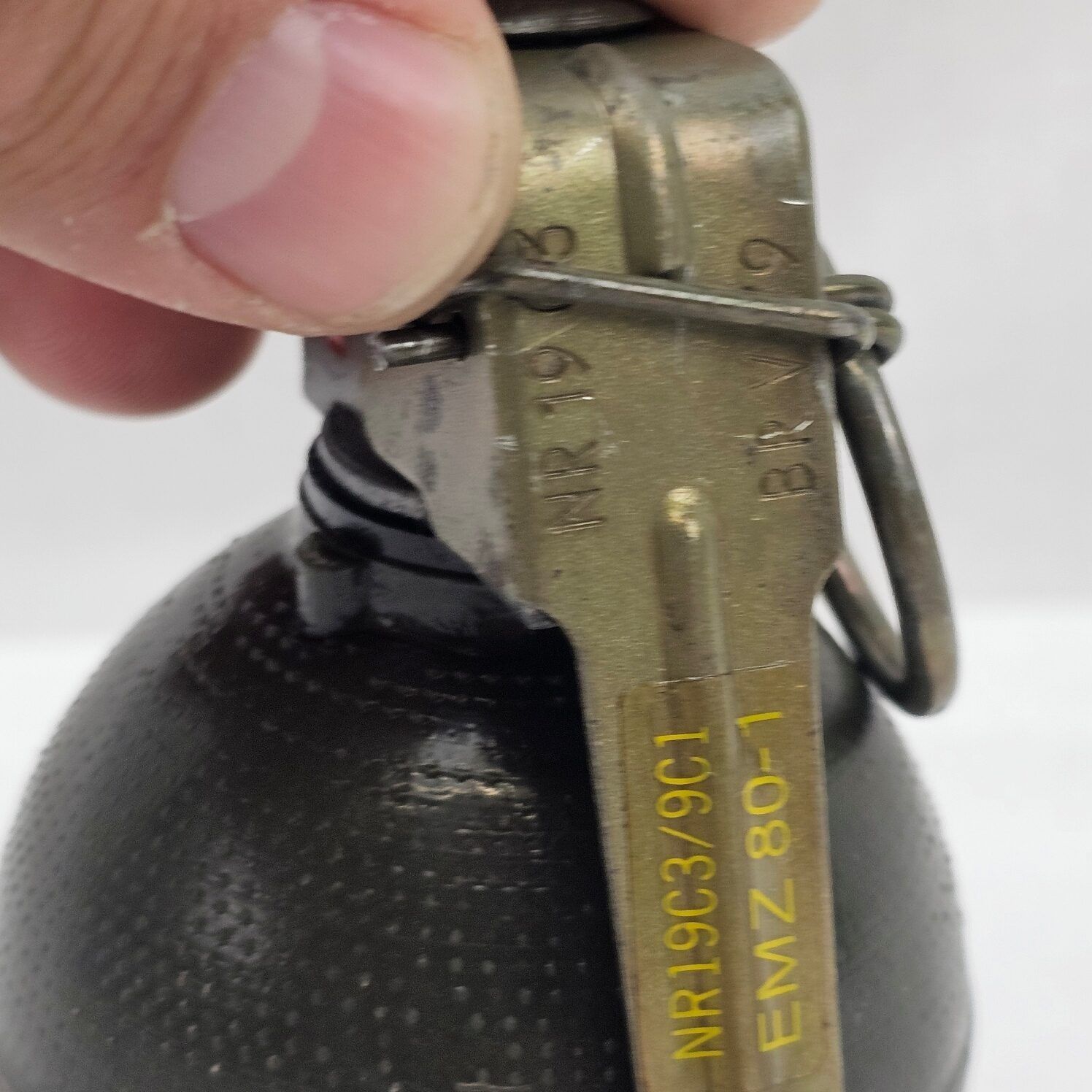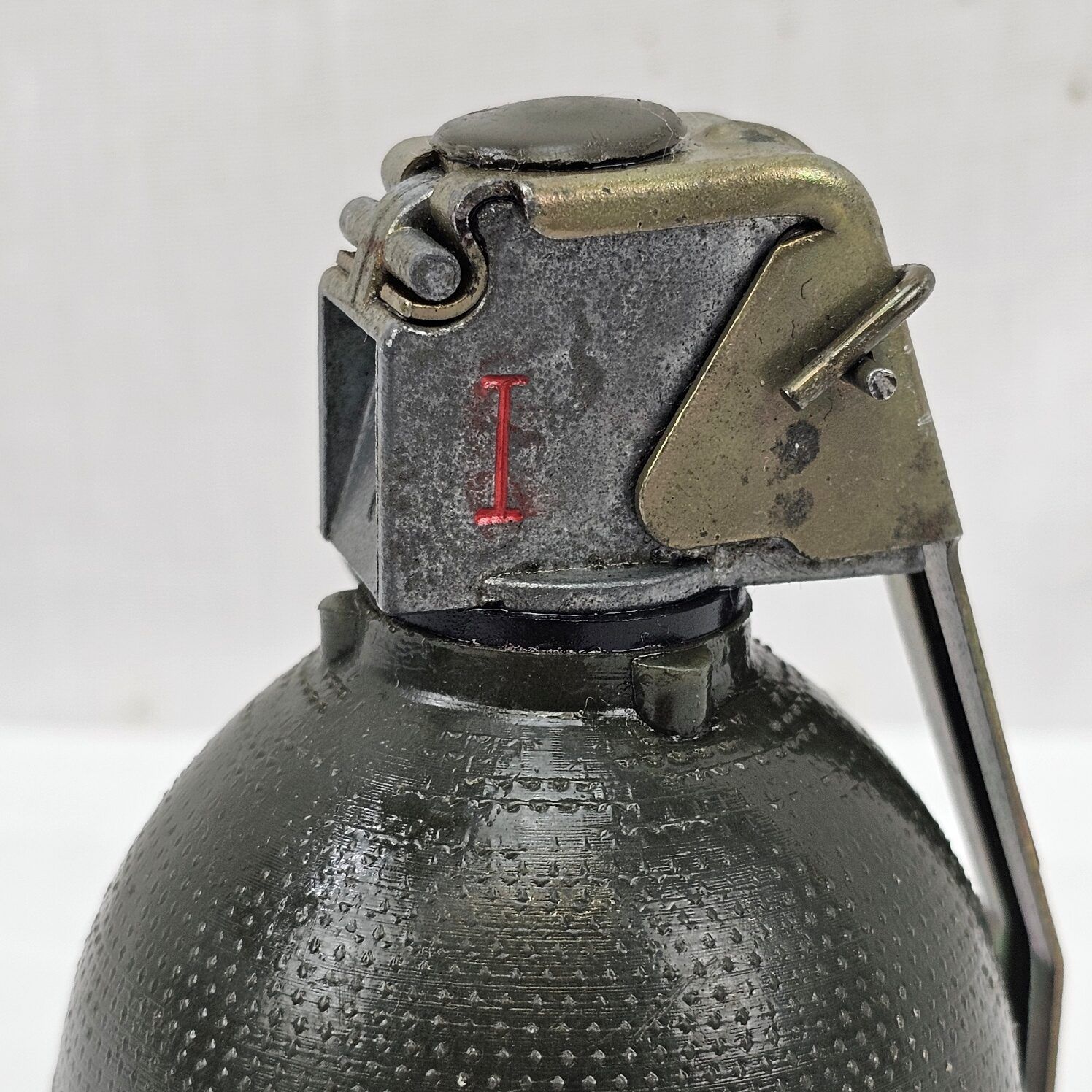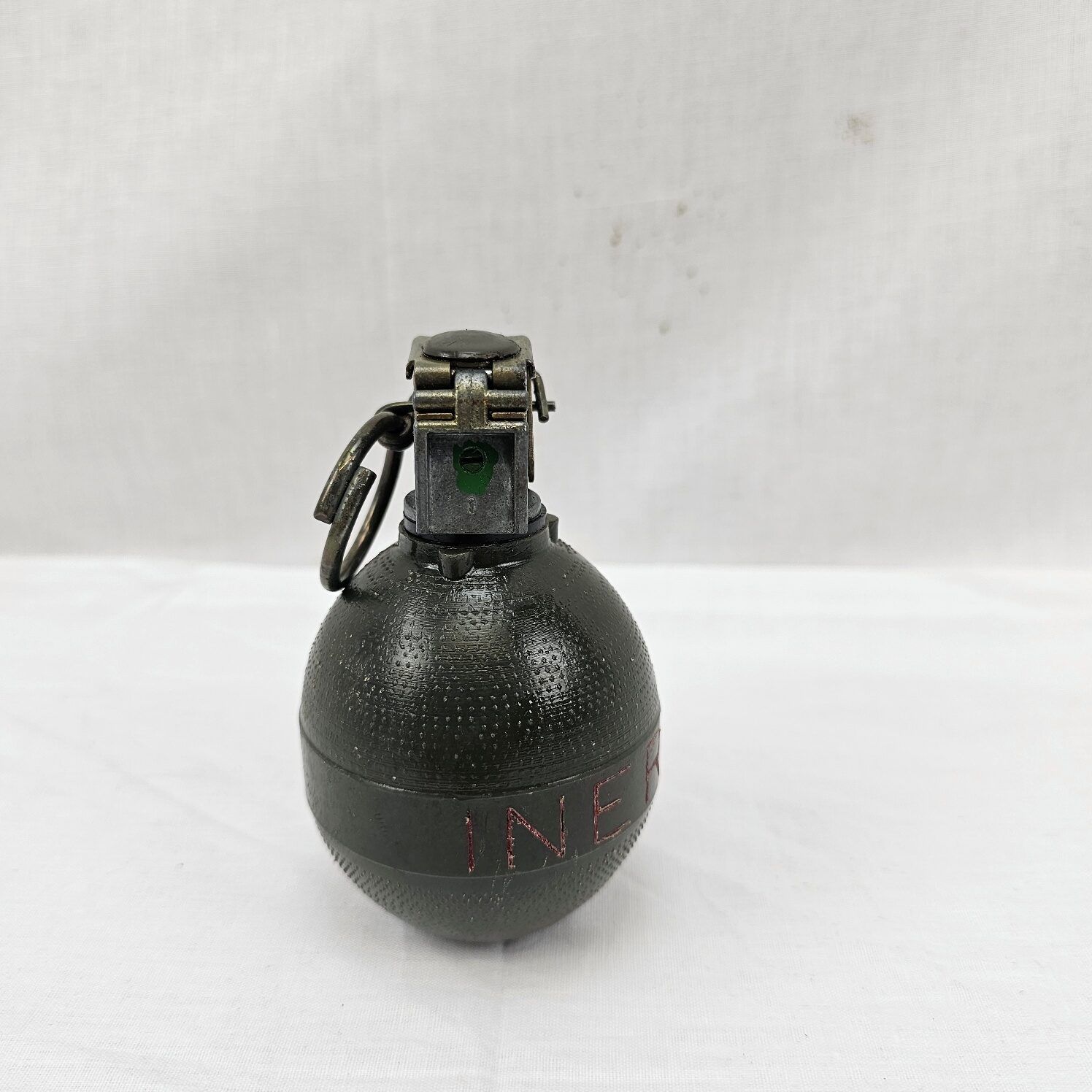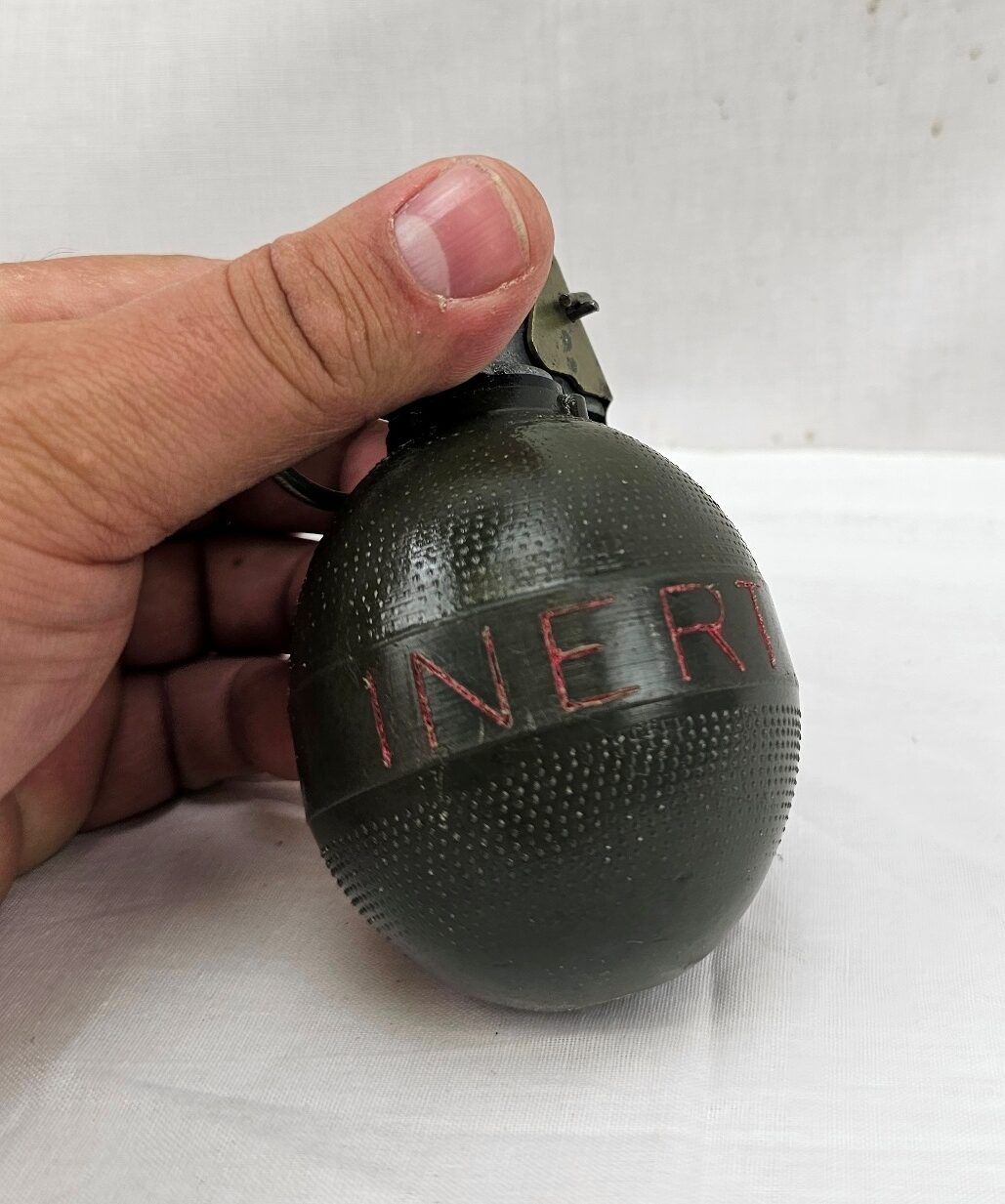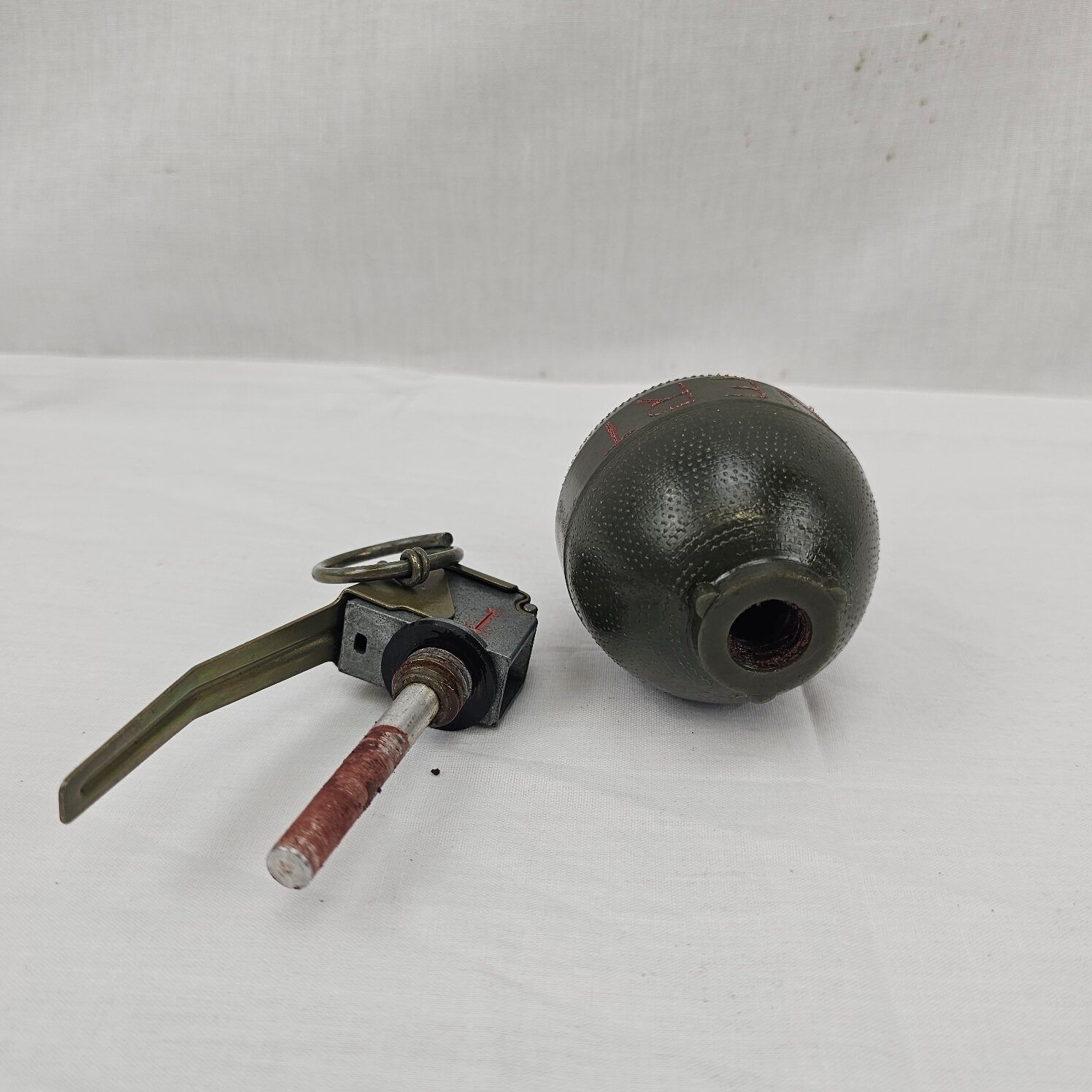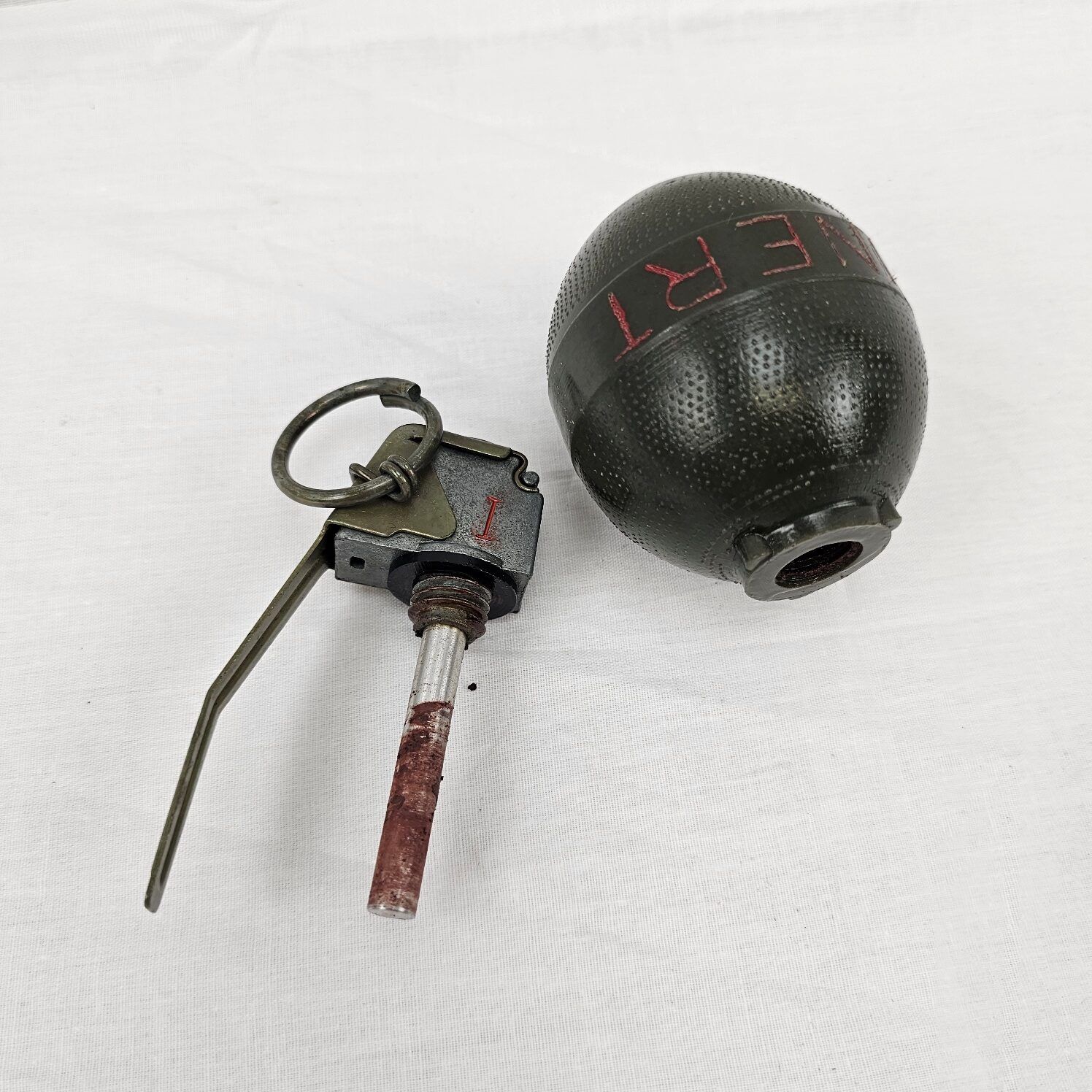~ Inert Dutch EMZ-NR-20 C1 Grenade Model 1974 – a very rare Green Inert Varant~
Most of the training variants of this grenade are blue but our example is green because it was probably a live one before.
Here is a short resume of this type of grenade:
Background:
1974: Development of the EMZ-Nr.20 grenade initiated to replace older models (Defensive 1C1, Offensive 13 and 13C1).
Participants:
Royal Dutch Army: Sought a single, versatile grenade.
RVO-TNO: Provided technical requirements for effectiveness and safety.
Eurometaal: Tasked with design and production.
Technical Requirements:
Lethality: Effective within 10 meters, safe beyond 20 meters.
Safety: Fragments must not be lethal at 20 meters.
Form and Weight: Egg-shaped, 350-450 grams for optimal throwing.
Durability: Functional between -40°C and +60°C, 10-year storage life.
Design and Prototyping:
Prototype 1:
Aluminum body: Lightweight, non-lethal fragments.
Steel balls: 2mm diameter for effective fragmentation.
RDX filling: High explosive for maximum initial velocity.
Mass Production Challenges:
Flow turning: Inefficient for mass production.
Plastic injection molding: Brittle at low temperatures.
Final Solution (EMZ-NR-20):
Rotational Molding: Used for forming the hollow plastic body.
Steel Grit Fragments: Embedded in polyethylene for consistency.
Mirror Welding: Joins upper and lower body parts.
Production and Service:
Filling: Hand grenade filled with molten Comp B explosive.
Assembly: Marked, packed, and delivered to the Dutch Army.
Service History:
Adopted: Oldest known production lot from 1976.
Service Duration: Served until 1997-1998, replaced by Nr.331 grenade.
Variants:
Nr.20C1: Modified version with integral plastic body.
Drill Grenades: Solid aluminum, various colors for training.
Training Grenade Nr.21: Pyrotechnic charge, not adopted.
Rifle Grenade Adapter: Tested but not produced.
You can find all the info about this grenade here:
https://tgrm.foxed.ca/Dutch/EMZ-20%20HG.pdf


